In certain situations, you may find it necessary to close your garage door manually. This might occur if there’s a power outage, a malfunction in the automatic opener, or other unforeseen circumstances. Knowing how to close your garage door manually can be essential for securing your home and ensuring the safety of your belongings.
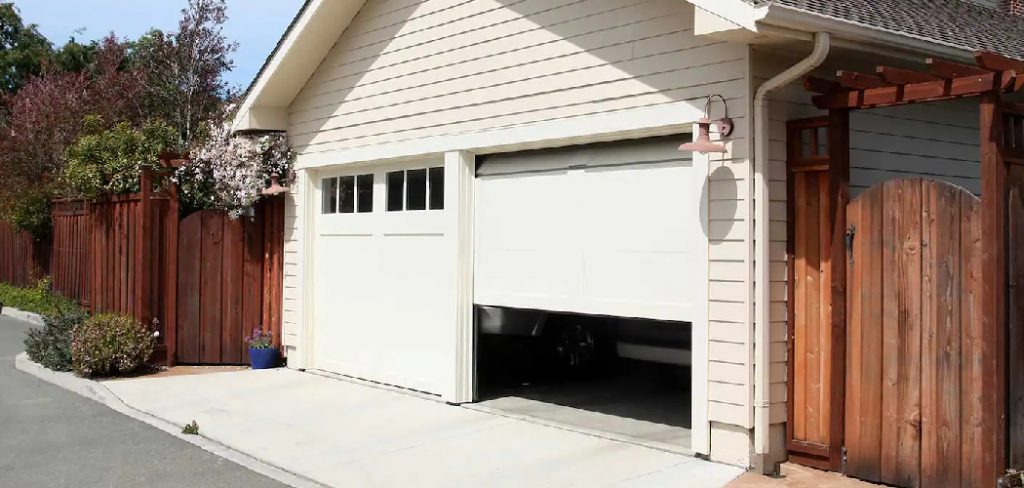
This guide on how to close garage door manually will provide you with step-by-step instructions on how to manually operate your garage door safely and effectively.
What is Manual Garage Door Closing?
Manual garage door closing is when you physically open or close the garage door without using an automatic opener. Most modern garage doors have a built-in emergency release system that allows you to manually operate the door in case of emergencies or power outages. This system disengages the motor and allows you to operate the door manually using the handle.
It’s important to note that manually closing your garage door should only be done when absolutely necessary, as it can be physically strenuous and potentially dangerous if not done correctly. It’s always best to use the automatic opener whenever possible.
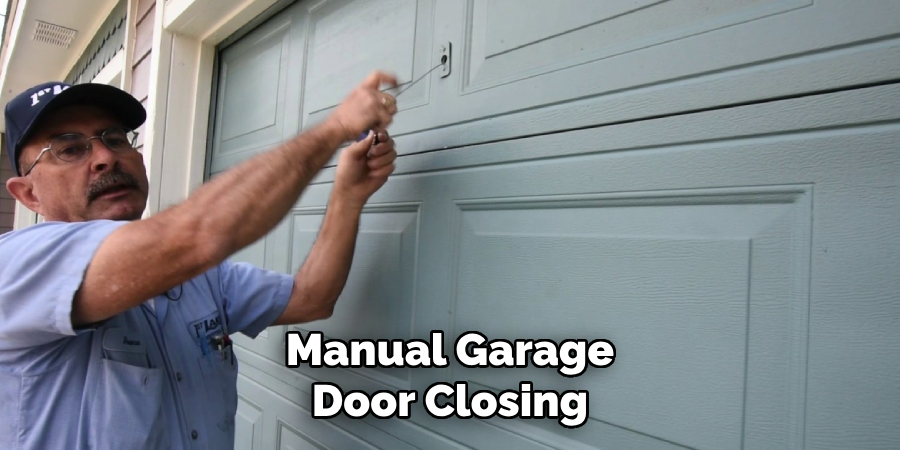
8 Step-by-step Guidelines on How to Close Garage Door Manually
Step 1: Prepare Your Tools
Before you begin, make sure you have the necessary tools on hand. You will need:
- A Ladder (if Your Garage Door is Tall)
- A Pair of Pliers
- A Winding Rod (if Your Garage Door Has Torsion Springs)
- A Sturdy Piece of Wood (if Your Garage Door Has Extension Springs)
Step 2: Locate the Manual Release Cord
The next step is to locate the manual release cord on your garage door opener. This cord is typically red and hangs from the garage door trolley. The manual release cord is designed to disengage the opener from the garage door, allowing you to move the door manually.
Find the cord and ensure it is easily accessible. It’s important to avoid pulling the cord excessively hard, as doing so could cause damage to the mechanism or injury. Once located, you are ready to proceed to the next step.
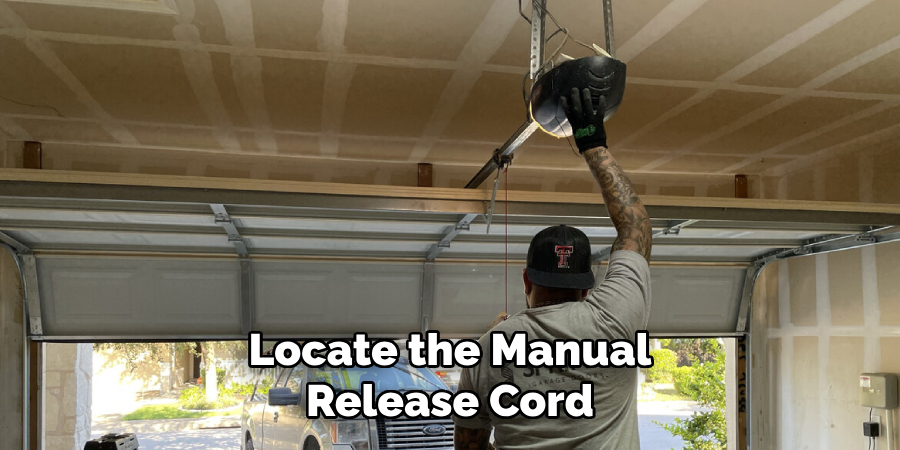
Step 3: Close the Garage Door
With the manual release cord located, pull it firmly yet gently to disengage the garage door opener from the door. You should hear a click or feel a release as the mechanism disengages. Once the opener is disengaged, you can begin to move the garage door manually. Carefully lower the garage door by holding it with both hands to maintain control and prevent it from slamming shut.
If the door is too heavy or difficult to manage on your own, ask for assistance to avoid injury. Continue to guide the door down until it is fully closed, ensuring it rests securely on the ground.
Step 4: Secure the Garage Door
Once the garage door is fully closed, it’s crucial to secure it to prevent unauthorized access and ensure it stays in place. If your garage door has sliding locks on the inside, engage them to lock the door. These locks typically slide into a hole in the track, securing the door from being lifted manually from the outside.
If your door does not have built-in locks, you can use a C-clamp or locking pliers to secure it. Attach the clamp or pliers to the track just above one of the rollers, which will prevent the door from being lifted. Double-check that the door is firmly locked and cannot be easily moved. Ensuring the garage door is secure will help keep your property safe and provide peace of mind.
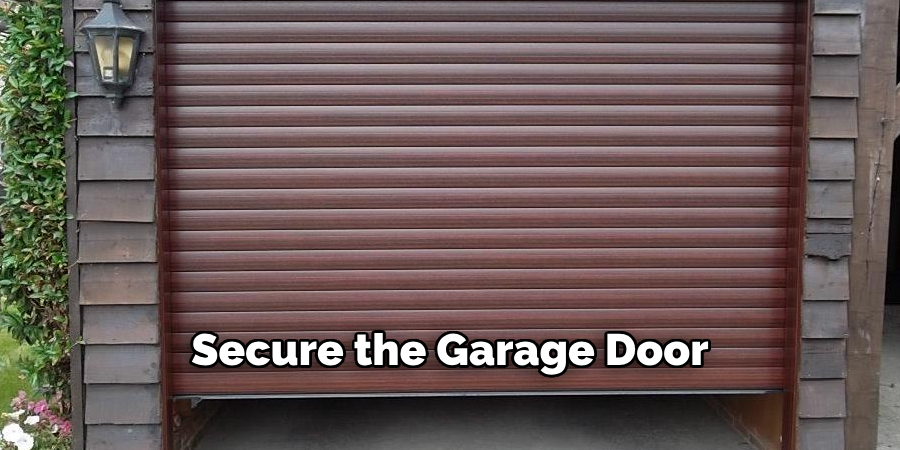
Step 5: Re-engage the Garage Door Opener
Once the door is fully closed and secured, it’s time to re-engage the garage door opener. This step is crucial because if you forget to re-engage the opener, the door will not open automatically when needed. To re-engage, simply pull down on the manual release cord once again until you hear or feel it click back into place.
Be sure to test your automatic opener to ensure it is functioning correctly before relying on it again in the future. If there are any issues with the opener, contact a professional for assistance.
Step 6: Inspect Your Garage Door
After manually closing your garage door, it’s important to inspect it for any damage or potential issues. Look for any obvious signs of wear and tear, such as broken springs or loose hardware. If you notice any problems, do not attempt to fix them yourself. Contact a professional garage door repair technician for assistance.
It’s also a good idea to check the weather stripping and seal on your garage door. If they are damaged or worn, they will need to be replaced to ensure proper insulation and protection from the elements.
Step 7: Reset Your Automatic Opener
If you had to manually close your garage door due to a power outage, it’s important to reset your automatic opener once power is restored. This will allow it to function properly when needed in the future. Simply follow the manufacturer’s instructions for resetting your specific opener model.
You may also need to reset your garage door opener’s travel and force limits, as they can sometimes be affected by manual operation. Refer to your owner’s manual for instructions on how to adjust these settings.
Step 8: Regular Maintenance and Repairs
To prevent the need for frequent manual closing of your garage door, it’s important to regularly maintain and inspect it. This includes lubricating moving parts, checking the balance of the door, and replacing any worn or damaged components. It’s also crucial to address any repairs promptly before they become more significant issues.
By following these guidelines on how to close garage door manually, you can confidently and safely close your garage door manually when necessary. Remember to always use caution and seek professional help if needed. With proper maintenance and care, your garage door will continue to operate smoothly and efficiently for years to come. Keep these steps in mind for a seamless manual closing process in case of emergencies or power outages.
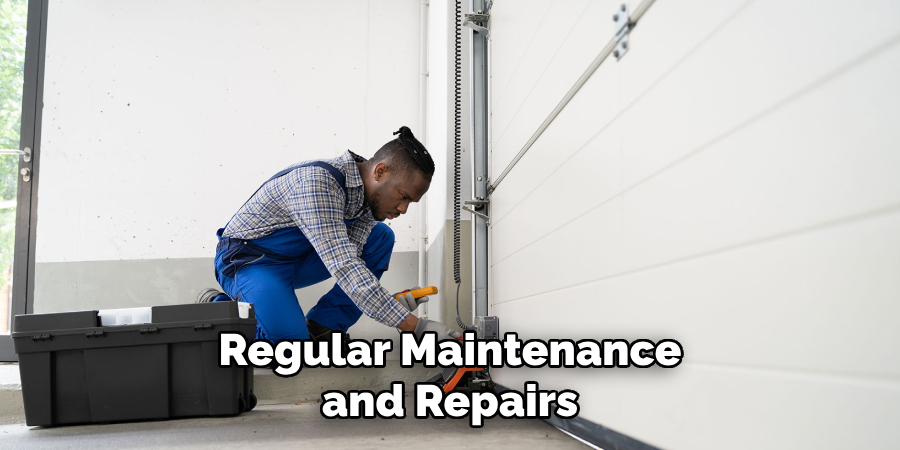
Troubleshooting Tips
- If you are unable to locate the manual release cord, refer to your garage door opener’s user manual for help.
- If your door is not closing evenly or appears to be jammed, do not continue with manual closing. Contact a professional for assistance.
- Never attempt to adjust or repair torsion springs on your own as they can cause serious injury if not handled correctly. Always consult a trained technician for any spring repairs.
- It’s important to test your automatic opener and check its functionality regularly, even if you have not manually closed the door recently.
- Make sure all family members know how to manually close the garage door in case of emergencies.
- Consider installing battery backup systems for your garage door opener to ensure it can still function during a power outage.
Frequently Asked Questions
Q: Can I Manually Close My Garage Door if It Has an Automatic Opener?
A: Yes, you can manually close your garage door by using the manual release cord. However, this should only be done when necessary, as manually operating the door can be physically demanding and potentially dangerous.
Q: How Do I Know if My Garage Door Has Torsion or Extension Springs?
A: To determine what type of springs your garage door has, look at the location of the springs. If they are above the door opening attached to a metal bar, they are torsion springs. If they are on either side of the door tracks, they are extension springs.
Q: Can I Use Any Type of Clamp or Pliers to Secure My Garage Door?
A: It’s best to use clamps or pliers specifically designed for securing garage doors. These tools have a rubber coating that will not damage your door or tracks.
Q: How Often Should I Inspect and Maintain My Garage Door?
A: It’s recommended that you inspect and maintain your garage door at least once a year. However, if you notice any issues or unusual sounds, it’s best to address them promptly before they become more significant problems.
Q: Is It Safe for Me to Attempt Repairs on My Garage Door?
A: It is not recommended for individuals without proper training and experience to attempt repairs on their garage door. Garage doors are complex systems with potential safety hazards, so it’s best to leave repairs to professional technicians.
Conclusion
Manually closing your garage door can be a necessary measure during power outages or mechanical failures, but it requires careful attention and adherence to safety guidelines. By following the steps outlined in this guide on how to close garage door manually, you can ensure that you handle the task efficiently and securely, protecting both yourself and your property.
Regular maintenance and timely inspections are crucial in preventing unexpected issues and extending the lifespan of your garage door system. Should you encounter any major problems, do not hesitate to seek professional assistance.
With this knowledge, you are well-equipped to manage your garage door manually when the situation demands it, ensuring uninterrupted security and convenience.
About
Safety Fic is a distinguished figure in the world of Diy design, with a decade of expertise creating innovative and sustainable Diy solutions. His professional focus lies in merging traditional craftsmanship with modern manufacturing techniques, fostering designs that are both practical and environmentally conscious. As the author of diy, Safety Fic delves into the art and science of Safety Fic-making, inspiring artisans and industry professionals alike.
Education RMIT University
(Melbourne, Australia) Associate Degree in Design (Safety Fic) Focus on sustainable design, industry-driven projects, and practical craftsmanship. Gained hands-on experience with traditional and digital manufacturing tools, such as CAD and CNC software.
Nottingham Trent University
(United Kingdom) Bachelor’s in diyfastly.com and Product Design (Honors) Specialized in product design with a focus on blending creativity with production techniques. Participated in industry projects, working with companies like John Lewis and Vitsoe to gain real-world insights.
Publications and Impact
In diy, Safety Fic his insights on indoor design processes, materials, and strategies for efficient production. His writing bridges the gap between artisan knowledge and modern industry needs, making it a must-read for both budding designers and seasoned professionals.
